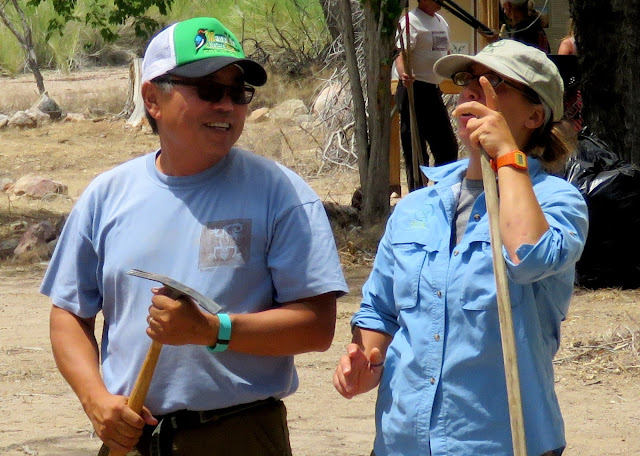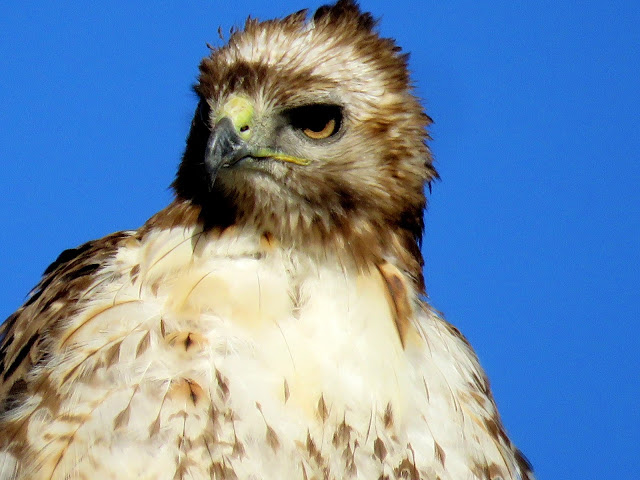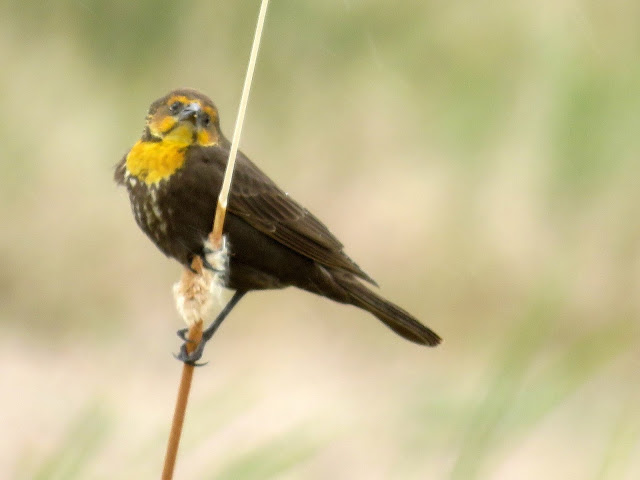Seasonal changes have brought new birds to the area and woodpeckers are traveling along the Amargosa River as they shift from higher elevation breeding territories to wintering areas.
Sapsuckers are woodpeckers that cut or drill into tree bark and lick up the sap with long highly specialized tongues. They also eat seeds, fruits,and insects.Another food source is the moist inner layers of bark. Their chisel-like bills are extremely versatile.
 |
| Red-breasted Sapsucker |
Red-breasted and Red-naped Sapsuckers are extremely closely related and often hybridize.


An Amargosa Toad poses for a close up.
A Greater Roadrunner showed off its hunting skills from a distance.
A little further down the road at Parker Ranch, a couple of Great-horned Owls enjoyed the shade of tall Cottonwood trees.(If you're interested in visiting Parker Ranch, please email The Nature Conservancy at nevada@tnc.org)

A Zebra-tailed Lizard demonstrates how to keep one's toes from being burned on an old pipe in the sun. Soon most species of lizards will retire underground for the winter.
Oasis Valley, Beatty Nevada supports an amazing variety of wildlife. Year round resident species, winter visitors,and
migrants all depend on the habitat provided by the water and vegetation of the Amargosa River and the small springs that are its tributaries.







































































